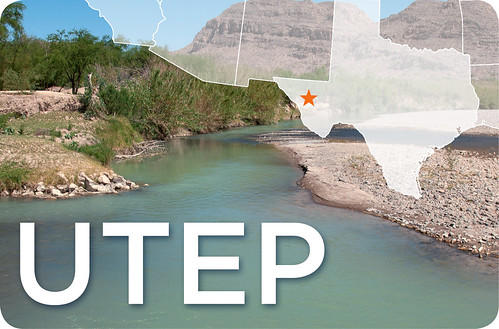
This post is part of the Science Tuesday feature series on the USDA blog. Check back each week as we showcase stories and news from USDA’s rich science and research portfolio.
Scientists from the University of Texas at El Paso (UTEP) are working with stakeholders to determine the course their research will take. The result, they say, is better science that is more useful to end users – and the scientists learn a lot, too.
Rather than have their own science-based questions direct their research, Dr. Josiah Heyman and his research partner Dr. William Hargrove will let stakeholders – the actual users of their science – point the way. According to Heyman, this “participatory approach” is science for the public’s sake, not for the scientists’ sake. The two lead a multi-institutional, multi-national project that is tackling drought-driven water supply issues in the Southwest.
Their project involves identifying and documenting the water sources available in the region – on both sides of the Rio Grande, both above ground and below – and helping policy makers and residents manage their ever-shrinking water resources. The U.S. Department of Agriculture’s National Institute of Food and Agriculture (NIFA) supports their project with a 5-year $4.9 million grant.
Their task is not an easy one, as the area’s water comes from four major sources: a reservoir (Elephant Butte), a river (the Rio Grande), and two largely unmapped subterranean aquafers (the Mesilla Bolson and Hueco Bolson). The situation gets more complicated when you throw an international treaty into the mix. That’s where international research partner Universidad Autonoma de Ciudad Juarez (UACJ) comes in.
“The water in this basin is altogether binational,” said Heyman, UTEP professor of sociology and anthropology. “The major subsurface aquifers cross the border and the river is shared between the two countries. UACJ will provide crucial knowledge about the dynamics of water on the Mexican side so we have a complete understanding.”
Heyman considers this an exemplary project because transboundary watersheds exist both here and around the world. “Water stakeholders in the region are just as much Mexican as American, including agricultural and urban users and water governance agencies,” he said. “The participatory process involves Mexico, and UACJ is central to this.”
The participatory approach begins simply enough, Heyman said: researchers listen to stakeholder concerns and then develop human-environmental models. From there, though, the process is a bit fluid.
“We will discuss various scenarios and options with diverse groups of stakeholders at participatory meetings and then test scenarios and options using models,” he said.
Their participatory approach is not without precedent: Hargrove successfully demonstrated its merit during water quality research in Kansas where he identified and tested management options that improved water quality, was economically feasible, and acceptable to farmers and ranchers. Hargrove is the director of UTEP’s Center for Environmental Resource Management.
“We were able to develop and implement watershed protection plans to improve water quality,” Hargrove said of his project in Kansas. “We were able to do so because we engaged stakeholders in the watersheds from the beginning of the process.”
Education is just as important to the project as participation, Hargrove said. “Hispanics are underrepresented among water resource professionals and in environmental science areas in general,” he said. “We’re going to improve curricula and increase experiential learning opportunities to entice more Hispanic young people to consider water resources science as a career,” he said.
Even with the project’s obvious international aspect, Hargrove and Heyman are not satisfied with stopping at the U.S.-Mexico border. “This project is not just important for our region, but many other places in the United States and, indeed, the world. Many of the large desert river systems in the world, like the Nile, Jordan, Tigris, and Euphrates, face the same challenges. Our results should be relevant to those as well.”
Researchers from New Mexico State University, the University of New Mexico, Texas A&M/El Paso, and Michigan Tech are working alongside UTEP and UACJ on this project.
NIFA invests in and advances agricultural research, education, and extension and seeks to make transformative discoveries that solve societal challenges.
